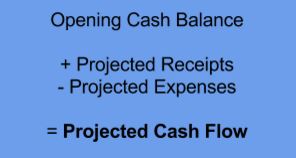Whether your practice is solo, small, medium, or whether you are an associate or partner in a firm, all attorneys manage their own personal law practice. The organization you work for, or with, is not responsible for your personal law practice – you are. If your personal law practice does not grow into what you want it to be, the grief is personal. If you are practicing law, the following attorney financial reports can help you meet your personal practice goals and avoid hidden enemies that could cost you everything.
When I am traveling in the U.S., in a car, I don’t bother much with drawing out a course out on a map anymore. I make sure to have a good address and a phone number of the place I am going. I have Siri or some kind of GPS. I’ve been driving long enough to know that from where I live, I head east for Atlanta and west for Dallas … you get the picture. For me, some travel is just intuitive.
My daughter and I starting a quest.

But when I am hiking, I have a completely different philosophy. I might have newfangled technology that tells me which way to go and how many steps I took to get there. Even so, I want a map and a compass. If I can get it, I want a topographical map. This compulsion might be a holdover from my Boy Scout orienteering merit badge. More likely, it is motivated by the feeling of being lost. If you have ever been lost in the wilderness, really lost, with limited food or water, you never want to be lost again.
Financial reports are the map and compass of a law practice. And by the way, if you are not looking at where you are in your law practice financially, if you don’t know where you are, you are lost.
Newfangled Technology Makes It Easier
The good news is, you do not have to spend hour upon hour pouring over financial reports. There are many tools available that work all of the following financial information into a dashboard. Many dashboards can be configured so that good things are green, cautioned things are yellow and areas of concern are red. You can configure the dashboard to reflect your own personal priorities.
The essential financial reports that are measured by your dashboard are summarized below.
Annual and Monthly Budget
This report is a plan: where am I going over the next month or the next year? It does not have to be drilled down into how many paper clips you might use. On the other hand, a budget helps you structure your practice into what you want, rather than what everyone else wants. If for example, you are on track with your budget to meet your revenue goals, you may be more comfortable turning down business that is outside the focus of your practice. A year of pruning your practice in this way may establish you as an authority in the practice area you want rather than a jack-of-all-trades.
Monthly Profit and Loss Statement
Where a budget is what you intend to do, a monthly profit and loss (P&L) statement is what you actually do. This is the report that you compare to your monthly budget to determine if you are on track or not. So that this data does not get too stale before the reports are available, establish a date early in the month where all the information for the prior month must be entered. For example, by the 6th of this month, all invoices should be sent, all expenses entered and actual transactions should be entered for the prior month. With this practice, your monthly profit and loss statement is available – and accurate – on the 7th day of the month.
Weekly Cash Flow Projection
Of course, the data reflected in a monthly P&L has already happened. It is like driving a vehicle while looking in the rearview mirror and only the rear view mirror. A cash flow projection is looking forward using the whole front windshield. A cash flow projection is calculated like this:

If you are watching your 90-day cash flow projections, you will have plenty of time to work out cash flow problems before you are suffering the consequences of them.
Balance Sheet
A balance sheet tells you what your practice is worth: Assets minus liabilities. It is a good tool to inform you if, over time, you are creating value in your practice or not.
A Broken Compass Is Dangerous
Financial reports are the map and compass of a law practice. The map informs you about where you are and where you want to go. A compass informs you which way to go. Sometimes, however, a map can be wrong or a compass can be damaged. A dashboard with red and green showing your condition is only as good as the data that goes into it. Financial reports are only as good as the data that goes into them. There is nothing more dangerous that a compass that reads wrong.
For me in my practice, and for many others, financial reports were purposefully altered to hide thefts or unauthorized activities. To guard against this happening to you, establish a way to insure that your bank statements are reconciled against your financial reports by someone other than the person that enters your financial data, or prepares your financial reports. Broken financial reporting is dangerous but easy to fix.
Reaching The Summit With Attorney Financial Reports
Isn’t the summit for a law practice strategically developing a fulfilling practice that meets your financial goals? Strategic decision making always has a financial component. Cash flow projections have always helped me make short term decisions strategically. Decisions with a longer impact may require looking to other financial reports – like your balance sheet.
Law practices are more like wilderness trekking than interstate driving. These few financial reports are tools for strategic practice growth. If you wouldn’t trek out in the wilderness without some way of knowing how to get back, don’t trek out into the future of your law practice without financial reporting.
###
- Inviting Human Flourishing Through Building Design - March 22, 2024
- The Message in Your Misfortunes - January 28, 2024
- The Right of Self-Determination - January 15, 2024

